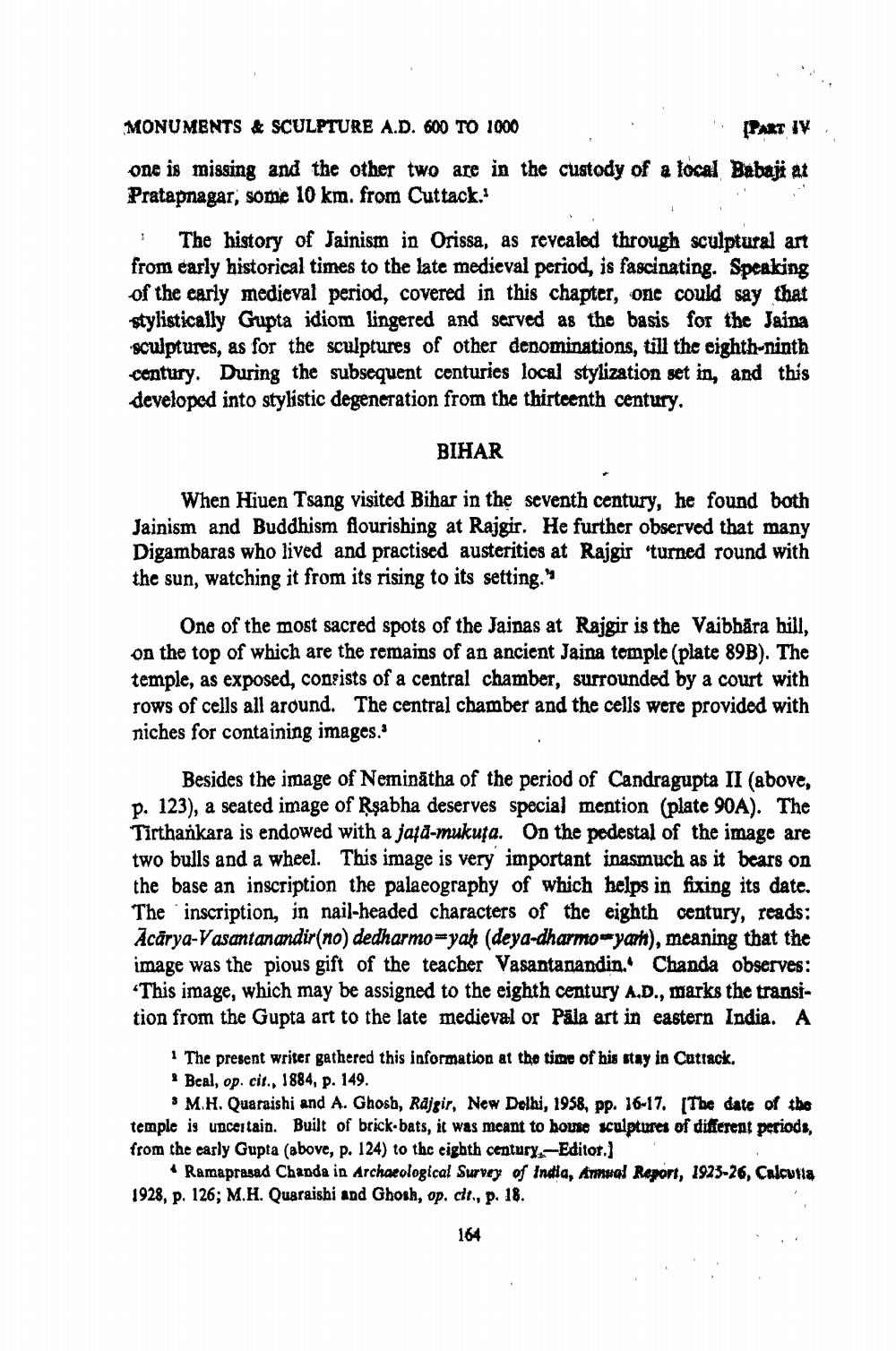________________
MONUMENTS & SCULPTURE A.D. 600 TO 1000
one is missing and the other two are in the custody of a local Babaji at Pratapnagar, some 10 km. from Cuttack.
: The history of Jainism in Orissa, as revealed through sculptural art from early historical times to the late medieval period, is fascinating. Speaking of the early medieval period, covered in this chapter, one could say that stylistically Gupta idiom lingered and served as the basis for the Jaina sculptures, as for the sculptures of other denominations, till the eighth-ninth century. During the subsequent centuries local stylization set in, and this developed into stylistic degeneration from the thirteenth century.
BIHAR
When Hiuen Tsang visited Bihar in the seventh century, he found both Jainism and Buddhism flourishing at Rajgir. He further observed that many Digambaras who lived and practised austerities at Rajgir turned round with the sun, watching it from its rising to its setting.'
One of the most sacred spots of the Jainas at Rajgir is the Vaibhāra hill, on the top of which are the remains of an ancient Jaina temple (plate 89B). The temple, as exposed, consists of a central chamber, surrounded by a court with rows of cells all around. The central chamber and the cells were provided with niches for containing images.'
Besides the image of Neminātha of the period of Candragupta II (above, p. 123), a seated image of Rşabha deserves special mention (plate 90A). The Tirthankara is endowed with a jafd-mukuta. On the pedestal of the image are two bulls and a wheel. This image is very important inasmuch as it bears on the base an inscription the palaeography of which helps in fixing its date. The inscription, in nail-headed characters of the eighth century, reads: Acārya-Vasantanandir(no) dedharmo=yah (deya-dharmoyah), meaning that the image was the pious gift of the teacher Vasantanandin. Chanda observes: *This image, which may be assigned to the eighth century A.D., marks the transition from the Gupta art to the late medieval or Pála art in eastern India. A
1 The present writer gathered this information at the time of his stay in Cuttack.
Beal, op. cit., 1884, p. 149.
MH. Quaraishi and A. Ghosh, Rajgir, New Delhi, 1958, pp. 16-17. [The date of the temple is uncertain. Built of brick-bats, it was meant to home sculptures of different periods, from the early Gupta (above, p. 124) to thc eighth century. -Editor.)
Ramaprasad Chanda in Archaeological Survey of India, Ammual Report, 1923-26, Calcutta 1928, p. 126; M.H. Quaraishi and Ghosh, op. cit., p. 18.
164




